Disclosure: This article contains affiliate links. We may earn a commission from purchases at no extra cost to you, which helps our travel content.
There's a particular magic that happens when you step away from the well-trodden tourist paths in Puerto Rico. While most visitors remain tethered to Old San Juan's colorful streets or Condado's glitzy storefronts, I've discovered that just a 15-minute drive southwest lies Guaynabo—a sophisticated suburb harboring some of the island's most compelling shopping experiences. After eight visits to Puerto Rico over the years, I've developed what my teenage son calls an 'unhealthy obsession' with the island's less-celebrated corners. Guaynabo represents exactly what I search for in my travels: that perfect alchemy of upscale comfort intertwined with authentic cultural immersion. The city balances modern luxury malls with weekend markets where artisans sell handcrafted treasures that tell stories generations deep. Whether you're hunting for high-end Puerto Rican fashion or searching for that perfect piece of handmade jewelry to commemorate your trip, Guaynabo delivers retail therapy with a distinctly boricua heartbeat.
San Patricio Plaza: Guaynabo's Retail Crown Jewel
San Patricio Plaza isn't just a shopping center—it's Guaynabo's social nucleus, where local families and savvy travelers converge in an atmosphere that feels distinctly more authentic than the tourist-oriented malls closer to the cruise ports.
On my first visit three years ago, I arrived expecting another generic shopping experience. Instead, I discovered a meticulously curated collection of both international brands and local boutiques that showcase Puerto Rico's evolving design aesthetic. The mall's recent renovation has transformed it into a light-filled, modern space that still maintains its distinctly Puerto Rican character.
What separates San Patricio from other shopping destinations is its perfect balance of familiar comfort and local discovery. Yes, you'll find recognizable names like Macy's anchoring the space, but venture deeper and you'll discover gems like Novus, where Puerto Rican designers display avant-garde fashion that blends tropical influences with contemporary silhouettes.
The food court—typically an afterthought in most malls—deserves special mention. Skip the fast-food chains and head straight for Café Ama, where the mallorca sandwiches rival anything you'll find in Old San Juan. I've spent many afternoons here, notebook open, watching local families gather while I plan my next shopping conquest.
The mall's crown jewel for serious shoppers is undoubtedly La Casa del Libro, an independent bookstore with an impressive selection of English and Spanish titles, including a comprehensive section dedicated to Puerto Rican history and literature. I've added several rare volumes on Caribbean architecture to my collection from their shelves.
For families, the mall offers a welcome respite from the heat with its excellent air conditioning and clean facilities. My son particularly appreciated the arcade on the upper level during our last visit—a perfect distraction while I explored the nearby jewelry stores featuring local artisans.
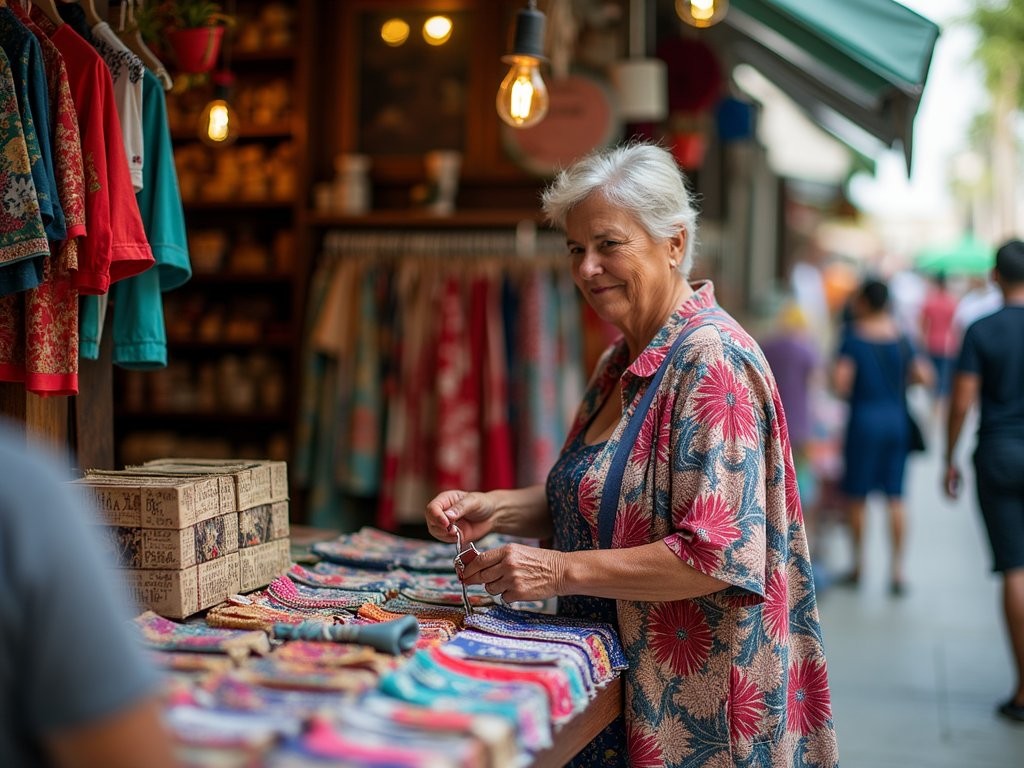
💡 Pro Tips
- Visit on weekday mornings to avoid local weekend crowds
- The information desk staff speaks excellent English and can direct you to stores featuring local designers
- Download the mall's app for special visitor discounts not advertised in stores
El Mercado: Where Guaynabo's Culinary Treasures and Artisanal Goods Converge
Tucked away in a corner of Guaynabo that few tourists ever discover lies El Mercado—a weekend market that embodies everything I love about authentic shopping experiences. Unlike the sanitized farmer's markets that have become Instagram backdrops in many American cities, El Mercado pulses with genuine Puerto Rican life.
I stumbled upon this gem during my third visit to the island when a taxi driver named Carlos, upon learning of my interest in local crafts, insisted on making a detour. "The real Puerto Rico is here," he promised. He wasn't exaggerating.
Arriving early on a Saturday morning revealed a scene of controlled chaos: vendors arranging their stalls, the air thick with the scent of fresh coffee and pastries. By 9 AM, the market transforms into a bustling community gathering. Local families shop alongside the occasional in-the-know visitor, creating an atmosphere that feels inclusive rather than exploitative.
The market's layout follows an informal but intuitive organization. The outer ring features agricultural products—fruits and vegetables that put American supermarket produce to shame. The inner sections house an eclectic mix of food vendors and artisans. Here, you'll find everything from hand-carved wooden santos (traditional religious figures) to contemporary jewelry made from indigenous materials.
My most treasured possession from El Mercado is a leather-bound journal with handmade paper, crafted by an elderly artisan named Miguel who has been practicing his craft for over five decades. His stall is usually located near the eastern entrance, identifiable by the small collection of antique bookbinding tools displayed proudly on his table.
For families exploring the market, the food section offers an approachable introduction to authentic Puerto Rican cuisine. My son, initially hesitant about unfamiliar foods, became an instant convert after trying alcapurrias (fritters filled with meat) from a vendor who has occupied the same corner for twenty years.
Before visiting, I recommend bringing a sturdy foldable tote bag to carry your purchases. You'll need it—the temptation to buy everything from coffee beans to handcrafted jewelry is overwhelming. Cash remains king here, though some of the more established vendors now accept cards through smartphone readers.

💡 Pro Tips
- Arrive before 10 AM on weekends to experience the market before the crowds peak
- Bring small bills and change—most vendors prefer cash transactions
- Ask vendors about their craft—many artisans love sharing their stories and techniques
Galería Guaynabo: The Island's Best-Kept Art Shopping Secret
When I first heard whispers about Galería Guaynabo from a concierge at my San Juan hotel, I was skeptical. "Better than the galleries in Old San Juan?" I asked. His knowing smile should have been answer enough.
Located in a converted colonial-era building just off Guaynabo's main plaza, Galería Guaynabo represents the antithesis of tourist-oriented art shops. The whitewashed exterior gives little indication of the treasures within—a curatorial choice that owner Mariana Rodríguez explained is deliberate: "We want people who are serious about Puerto Rican art to find us."
Inside, the gallery spans two floors connected by a spiral staircase that itself feels like an installation piece. The ground floor typically features rotating exhibitions from established Puerto Rican artists, while the upper level houses a permanent collection available for purchase.
What distinguishes this gallery from others on the island is its commitment to representing artists from across Puerto Rico, not just San Juan. During my most recent visit, I was particularly struck by a series of mixed-media pieces from an artist collective in Ponce that incorporated traditional vejigante mask imagery with contemporary political themes.
For travelers looking to invest in meaningful souvenirs that appreciate rather than depreciate, Galería Guaynabo offers art consultation services. Mariana spent nearly an hour with me discussing my preferences before guiding me toward a small but striking piece by emerging artist Rafael Trelles that now occupies a place of honor in my Lincoln home office.
Prices range from accessible (small prints starting around $75) to investment-level works by established masters. What remains consistent is the gallery's commitment to authenticity and artistic integrity.
When visiting with family, don't miss the small but thoughtfully curated gift shop near the entrance. Here, you'll find art books, high-quality postcards, and smaller works that make perfect gifts. My son, initially reluctant to join this "boring art thing," ended up selecting a handcrafted leather bookmark embossed with indigenous Taíno symbols that has become his constant companion during reading time.
Before leaving the gallery, ask about their schedule of events. The space regularly hosts artist talks and small concerts that provide intimate access to Puerto Rico's vibrant cultural scene in ways that larger venues cannot match.
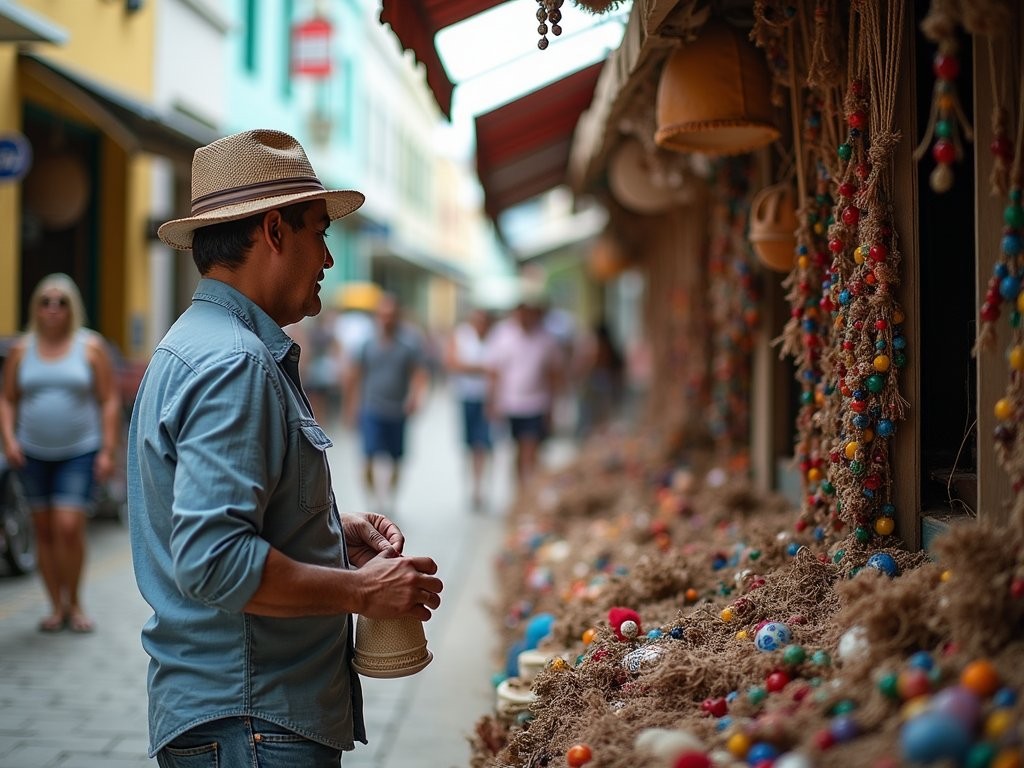
💡 Pro Tips
- The gallery is closed on Mondays and during siesta hours (1-3 PM)—plan your visit accordingly
- Photographs are permitted in most areas but ask permission before taking pictures of specific artworks
- The staff can arrange shipping for larger purchases, with surprisingly reasonable rates to the mainland US
The Artisan Workshop Trail: Guaynabo's Hidden Creative Enclave
Perhaps my most cherished discovery in Guaynabo came about entirely by accident. After a particularly satisfying lunch at a local restaurant, I noticed a small sign pointing down an unassuming side street: "Talleres de Artesanos" (Artisan Workshops). Following my traveler's intuition—which has rarely steered me wrong—I ventured down the narrow lane and stumbled upon what I now consider Guaynabo's most authentic shopping experience.
This informal collection of workshops, spanning approximately six blocks in the city's historic district, houses craftspeople practicing traditions that date back centuries. Unlike more commercial ventures, these are working studios first and retail spaces second—a distinction that makes the shopping experience infinitely more meaningful.
The unofficial starting point is Taller Hermanos Pérez, where three brothers continue their family's 80-year tradition of mask-making. The workshop smells of cedar and paint, with half-finished vejigante masks in various stages of completion hanging from the ceiling. Carlos, the eldest brother, invited me to try my hand at painting a simple design on a small mask—a humbling experience that gave me newfound appreciation for the skill involved.
Further along the street, you'll find Manos de Borikén, where Doña Luz has been weaving hammocks and other textiles for over four decades. Her pieces incorporate traditional Taíno patterns with contemporary color schemes. I purchased a table runner that has become the centerpiece of my dining room, prompting conversations about Puerto Rican craftsmanship at every dinner party.
For those interested in jewelry, Isabel's workshop offers pieces crafted from local materials including seeds, coconut shell, and reclaimed materials. Her sustainable approach results in one-of-a-kind accessories that make perfect gifts. I've equipped myself with a travel jewelry case specifically for transporting these delicate treasures home safely.
What makes this area special is the opportunity to witness creation in progress. Unlike shopping malls or even traditional markets, here you're purchasing directly from the creator, often watching them work on their next piece as you browse. The pricing reflects this direct relationship—expect to pay fair prices that honor the craftsmanship without the markup that comes with middlemen.
Navigating the workshop trail can be challenging without Spanish language skills, but I've found that genuine interest transcends language barriers. Bring a pocket translator if you're concerned, though most artisans have developed ways to communicate with international visitors through a combination of basic English, gestures, and the universal language of art appreciation.
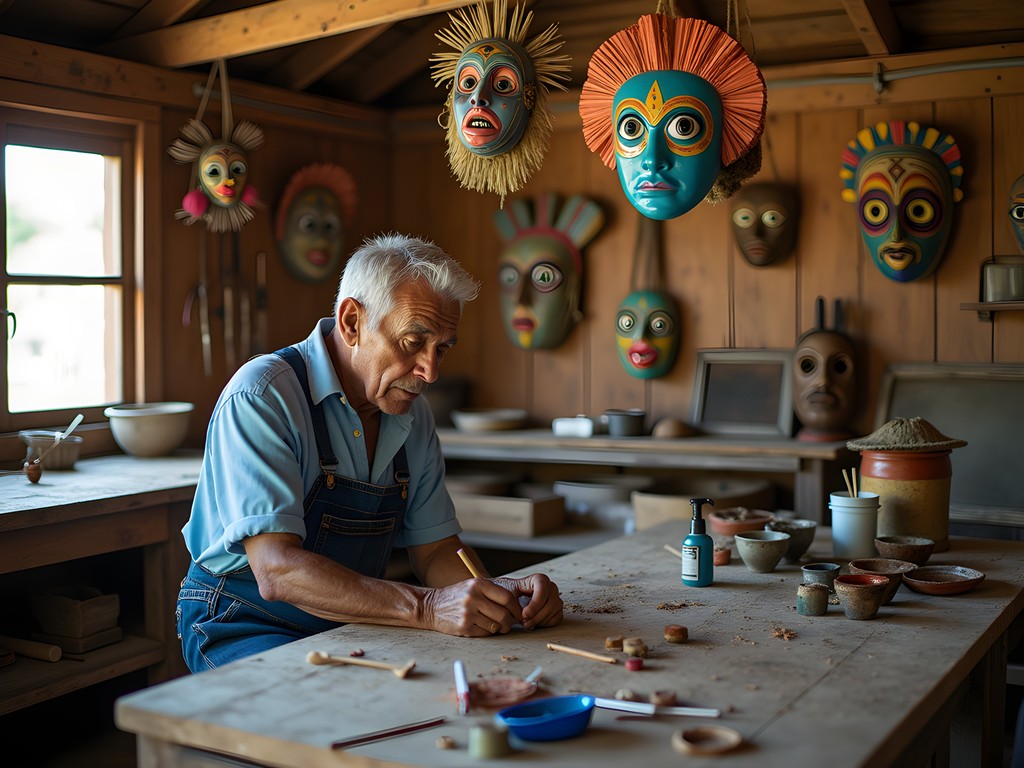
💡 Pro Tips
- Workshops generally open late (around 10 AM) and many close for several hours during midday heat
- Photography is welcome in most studios but always ask permission first as a courtesy
- Bring cash in small denominations—very few workshops accept credit cards
La Plaza: Modern Luxury with Puerto Rican Character
For travelers who appreciate luxury shopping but crave experiences beyond international chain stores, La Plaza offers Guaynabo's most sophisticated retail environment. This upscale shopping center represents Puerto Rico's evolving relationship with luxury—embracing global brands while maintaining a distinctly island sensibility.
Unlike San Patricio Plaza's family-oriented atmosphere, La Plaza caters to a more discerning clientele. The architecture itself makes a statement: soaring ceilings, marble floors, and strategically placed tropical plants create an environment that feels both cosmopolitan and unmistakably Caribbean.
On my first visit, I was immediately drawn to Concepción Studio, a boutique featuring the work of Puerto Rican fashion designers who have studied internationally but returned to infuse their homeland's aesthetic into contemporary clothing. The owner, Valeria, explained that many pieces incorporate traditional Puerto Rican needlework techniques executed with modern fabrics—a perfect metaphor for the island's cultural evolution.
For those seeking unique home goods, Casa Norberto offers a curated selection of locally designed furniture and décor that would fit seamlessly into upscale homes anywhere in the world. I've acquired several pieces over the years, including a striking coffee table book featuring Puerto Rican architecture that now occupies pride of place in my living room.
Jewelry enthusiasts should not miss Reinhold Jewelers, where established and emerging Puerto Rican designers display pieces that range from subtle everyday wear to statement items incorporating island motifs. During my last visit, I purchased cufflinks featuring a modern interpretation of Taíno petroglyphs that have become conversation starters at business functions back home.
La Plaza also houses several excellent dining options that go beyond typical mall fare. Cocina Abierta's Guaynabo outpost offers innovative takes on traditional Puerto Rican cuisine in an elegant setting—perfect for recharging between shopping excursions.
For families, the center offers enough diversions to keep children engaged while parents explore the boutiques. The small but well-designed central plaza frequently hosts cultural events, from fashion shows to live music performances highlighting local talent.
What distinguishes La Plaza from luxury shopping centers elsewhere is its commitment to showcasing Puerto Rican creativity alongside international brands. This isn't merely a collection of high-end stores that could exist anywhere—it's a thoughtfully curated space that celebrates the island's evolving design aesthetic.
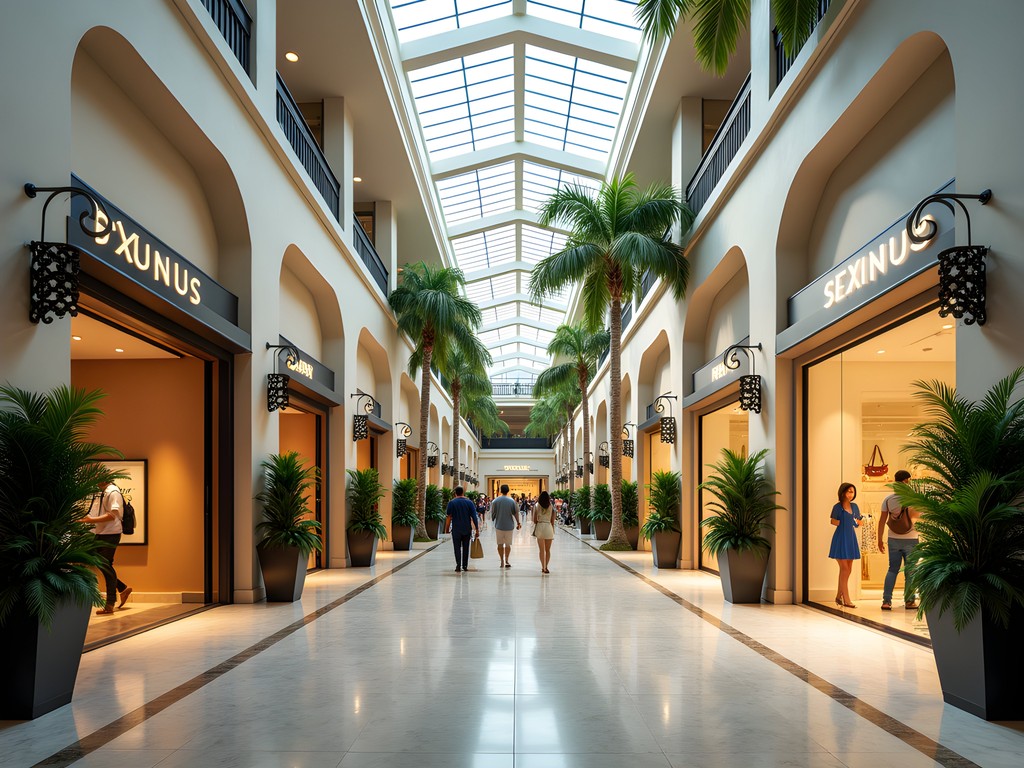
💡 Pro Tips
- Visit on weekday afternoons when the center is less crowded and you can receive more personalized attention from boutique owners
- Many shops offer tax-free shopping for visitors—bring your passport to qualify for exemptions
- The concierge desk can arrange for purchases to be delivered to hotels in the San Juan area, freeing you to continue exploring unburdened
Guaynabo Vintage: Unexpected Treasures in Unexpected Places
My most recent discovery in Guaynabo speaks to a growing trend I've observed across my global travels—the emergence of sophisticated vintage and second-hand shopping experiences in unexpected locations. Guaynabo Vintage, a collective of three adjacent shops in a renovated colonial building near the city center, represents this movement at its most authentic.
I discovered this hidden gem through a chance conversation with a barista at a nearby café who noticed my interest in the vintage camera I was carrying. "If you like old things with stories," she said, "you should visit the vintage shops around the corner."
The first shop, Memorabilia, specializes in Puerto Rican nostalgia—everything from mid-century furniture to collections of local advertising materials dating back to the 1940s. The owner, Gabriel, has an encyclopedic knowledge of the island's commercial history and can tell you the story behind virtually every item. I was particularly taken with a collection of hand-painted signs from defunct local businesses that capture a disappearing aesthetic.
Next door, Isla Vintage focuses on clothing and accessories with a distinctly tropical flair. Unlike curated vintage shops in major U.S. cities where prices often reflect hype rather than value, the selection here is both authentic and reasonably priced. During my visit, I found a perfectly preserved 1960s guayabera shirt that has since become my go-to attire for summer dinner parties.
The third space, simply called Libros, houses a remarkable collection of used books with a focus on Caribbean literature, history, and art. The owner, a retired university professor named Elena, has created more than just a bookstore—it's a cultural archive where visitors can discover out-of-print volumes on Puerto Rican culture that aren't available anywhere else. I spent an entire afternoon here, eventually leaving with a rare first edition of a 1950s travel guide to the island that offers fascinating insights into how Puerto Rico was once marketed to American tourists.
What unites these three distinct shops is a shared commitment to preservation and storytelling. These aren't simply places to find unique items—they're spaces where Puerto Rico's material culture is being actively documented and celebrated.
For families, these shops offer an opportunity to engage children with history in tangible ways. My son, initially skeptical about "old junk shops," became fascinated by a collection of vintage comic books featuring Puerto Rican superheroes he'd never encountered in mainstream American comics.
Before visiting, I recommend bringing a compact camera to document your discoveries. Many items tell visual stories that you'll want to capture, even if you don't purchase them.
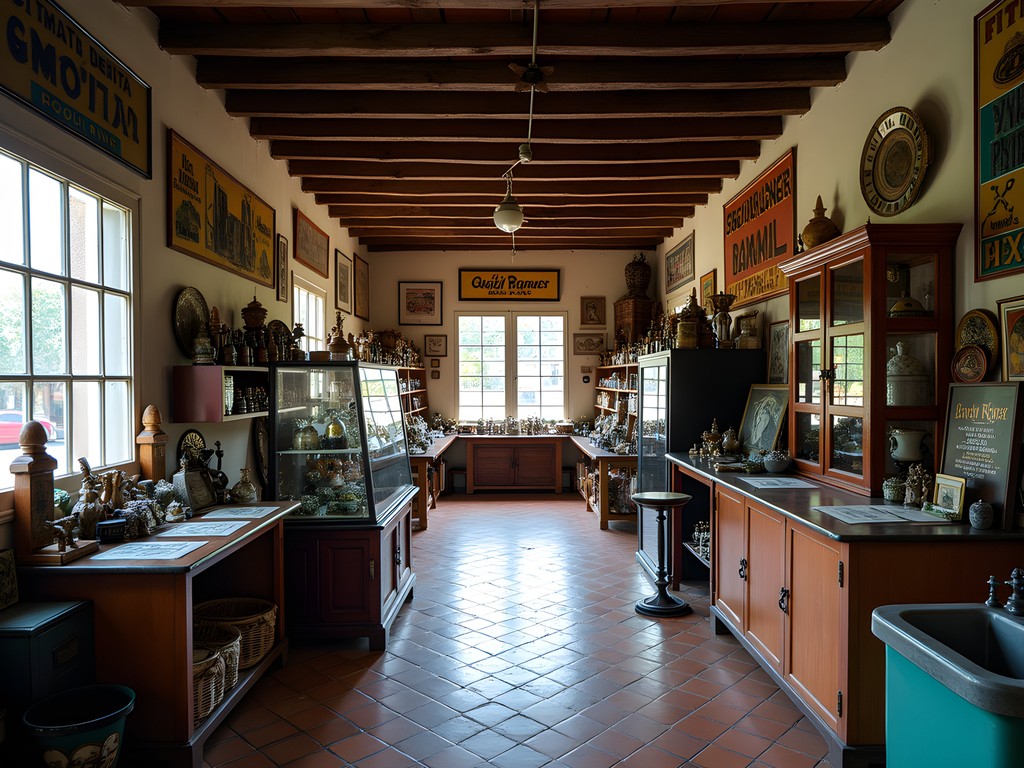
💡 Pro Tips
- The shops operate on island time—hours can be unpredictable, so call ahead if you're making a special trip
- Bargaining is not typically practiced here—prices reflect fair value for unique items
- Ask about the provenance of items you're interested in—the stories often enhance their value
Final Thoughts
As my taxi winds back toward San Juan, my bags considerably heavier than when I arrived, I find myself reflecting on Guaynabo's unique position in Puerto Rico's retail landscape. This suburb, often overlooked by guidebooks fixated on beaches and colonial architecture, offers something increasingly rare in our homogenized world—shopping experiences that couldn't exist anywhere else. From the artisan workshops where centuries-old techniques find contemporary expression to vintage shops preserving the island's material culture, Guaynabo rewards those willing to venture beyond the obvious. What I value most about shopping here isn't just the unique items I've acquired, but the connections formed through commerce—conversations with creators, stories exchanged with shop owners, and the tangible links to Puerto Rican culture that now enrich my home thousands of miles away. Next time your Puerto Rican itinerary takes shape, consider carving out at least a day for Guaynabo. The island's soul isn't just found in its landscapes and landmarks, but in the creative expressions of its people—many of which are waiting to be discovered in this unassuming suburb just minutes from San Juan.
✨ Key Takeaways
- Guaynabo offers a perfect balance of luxury shopping and authentic cultural experiences just 15 minutes from San Juan
- The artisan workshop trail provides direct access to creators practicing centuries-old Puerto Rican crafts
- Local markets and galleries showcase Puerto Rican creativity that often goes unrepresented in tourist areas
📋 Practical Information
Best Time to Visit
Year-round, though January-April offers the most pleasant weather
Budget Estimate
$75-150 per day for shopping and meals, excluding major purchases
Recommended Duration
One full day for highlights, weekend for comprehensive exploration
Difficulty Level
Beginner
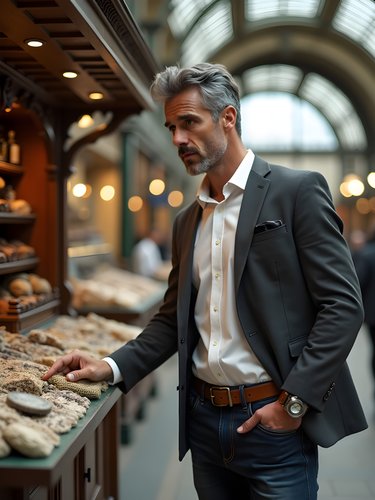
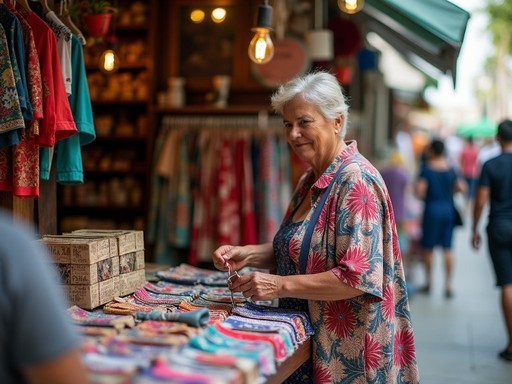
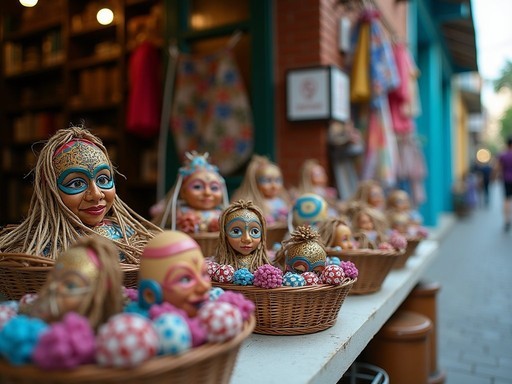
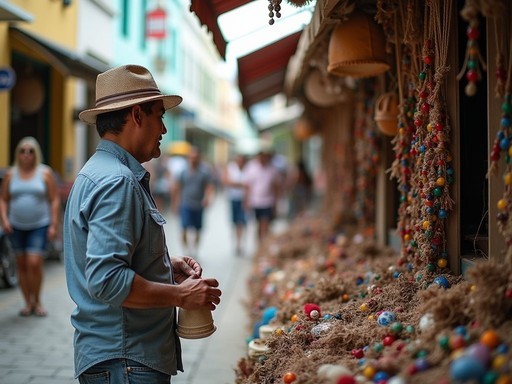

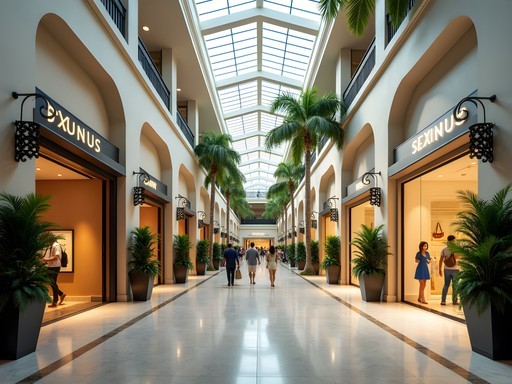




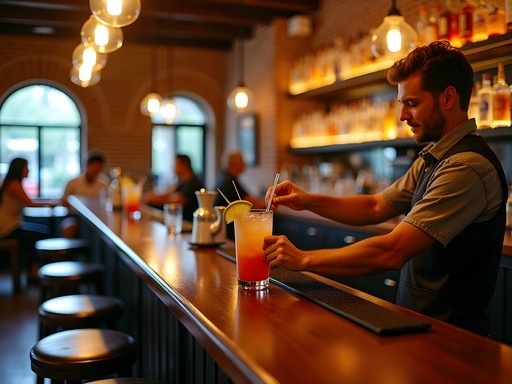
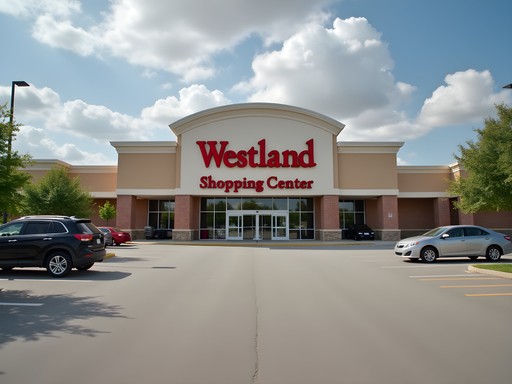


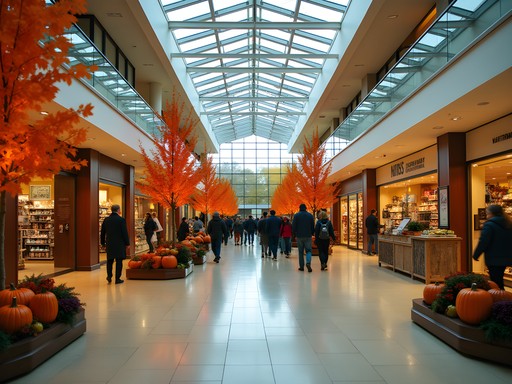

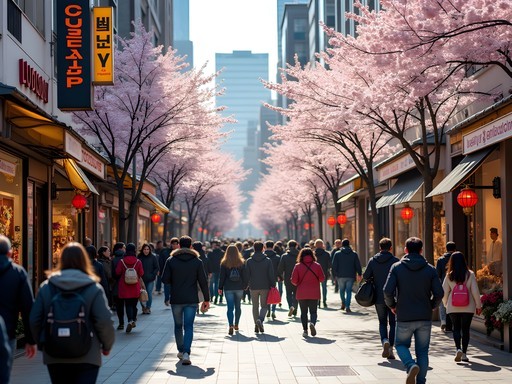
Comments
smartclimber
YES! Finally someone writing about Guaynabo! I stumbled on Galería Guaynabo completely by accident last year and ended up spending my entire day there. Bought the most incredible hand-carved wooden mask that's now the centerpiece of my living room. The artist explained the whole cultural significance and even showed me photos of the tree it came from. Pro tip for anyone going: bring a foldable tote because you WILL buy more than you planned! And don't miss the little coffee shop behind the gallery - best café con leche on the island.
Stephanie Romano
We just got back from Puerto Rico last month and I wish I'd seen this post before our trip! We spent all our shopping time in Old San Juan (which was lovely) but completely missed Guaynabo. El Mercado sounds exactly like the kind of place my family loves - my kids are always hunting for unique snacks and my husband collects handmade kitchen items. That artisan workshop trail would have been perfect for us! We did find some beautiful pieces in San Juan, but now I'm already planning our return trip with Guaynabo as a must-visit. Did anyone have trouble communicating with the artisans if you don't speak Spanish? My Spanish is pretty basic.
smartclimber
I visited El Mercado last year and most vendors knew enough English to help with purchases. Some of the older artisans didn't speak much English, but they were super patient with my terrible Spanish! Lots of pointing and smiling got us through. 😊
Stephanie Romano
That's reassuring! I've found a smile and hand gestures work wonders in most places. Can't wait to check it out next time!
escapediver
Great post! How did you get around in Guaynabo? Is it easy to reach from San Juan without a rental car?
Mark Franklin
Thanks! I took taxis most of the time - about $15-20 from Old San Juan. There's also public transportation (AMA buses), but they run on island time, if you know what I mean! Worth it though.
escapediver
Perfect, thanks! I'll probably go with taxis then to maximize shopping time.
BeachBum23
Love that photo of the colorful masks! Are those for sale at the market?
CaribTraveler
Great post! Are there any specific artisans at El Mercado who specialize in wooden crafts? My husband collects handmade wooden items from our travels.
LocalPRGirl
Not the author but I'm local - look for Miguel Sanchez's stall! He makes beautiful carved santos (religious figures) from native Puerto Rican woods. He's usually there Thursdays and weekends.
CaribTraveler
Thank you so much! Will definitely check out his work.
IslandHopper55
Those artisan markets look incredible! Adding this to my Puerto Rico itinerary for sure.
Stephanie Romano
Mark, this guide is exactly what I wish I had before visiting Guaynabo last month! The Artisan Workshop Trail was the highlight of our trip. My daughter still talks about watching that elderly woman weaving the traditional mundillo lace - such a beautiful art form that's becoming rare. We also found this amazing little coffee shop near Galería Guaynabo called Café Canela that serves the most incredible locally-grown coffee. The owner roasts it on-site and will tell you the whole story of his family's coffee farm if you ask! I documented our whole Guaynabo adventure on my blog if anyone wants more family-friendly tips. I packed my packing cubes to bring back all the crafts we bought!
PuertoRicoFan87
Café Canela is my favorite! Did you try their mallorcas? To die for!
TravelWithKids
Going to check out your blog! We're heading there with our 9-year-old twins in March.
Stephanie Romano
@PuertoRicoFan87 YES! The mallorcas were incredible. My kids had them with ice cream! @TravelWithKids Your twins will love it - there's a small playground behind El Mercado that's perfect when they need a break from shopping.
nomadseeker23
This looks amazing! How easy is it to get from San Juan to Guaynabo if you don't want to take a taxi? Is there public transportation that's reliable?
Stephanie Romano
I was just there with my family last month! We actually took the AMA bus (Route A9) from San Juan to San Patricio Plaza and it was super easy and cheap. Only about 75 cents per person! The buses run every 30 minutes during weekdays.
nomadseeker23
Thanks so much Stephanie! That's exactly what I needed to know. Did you feel safe using the bus with your family?
Stephanie Romano
Absolutely! My kids (8 and 11) loved looking out the window at all the colorful buildings. Just make sure to have small bills or exact change.
Ahmed Greene
This brought back memories! I stumbled upon Guaynabo completely by accident last year when my rental car GPS took me on a detour. Ended up spending three unplanned but wonderful days exploring. The coffee at El Mercado is worth the trip alone - I bought beans from a local grower who explained their small-batch roasting process. My budget travel tip: visit on weekdays when many artisans offer better prices and are more willing to negotiate. Also, there's a small guesthouse behind the market square (can't recall the name) that was half the price of my San Juan hotel and twice as charming. Sometimes getting lost leads to the best discoveries!
nomadwanderer
Was it Casa Amarilla? I've heard good things about that place!
Ahmed Greene
Yes! That's it - Casa Amarilla. The owner makes amazing breakfast with local fruits. Highly recommend!
adventureace
Any specific shops in San Patricio Plaza you'd recommend for authentic souvenirs?
Mark Franklin
Check out Artesanías Boricuas on the second floor - family-owned shop with amazing wooden carvings and some beautiful vejigante masks!
Venture X
Premium card with 2X miles, $300 travel credit, Priority Pass